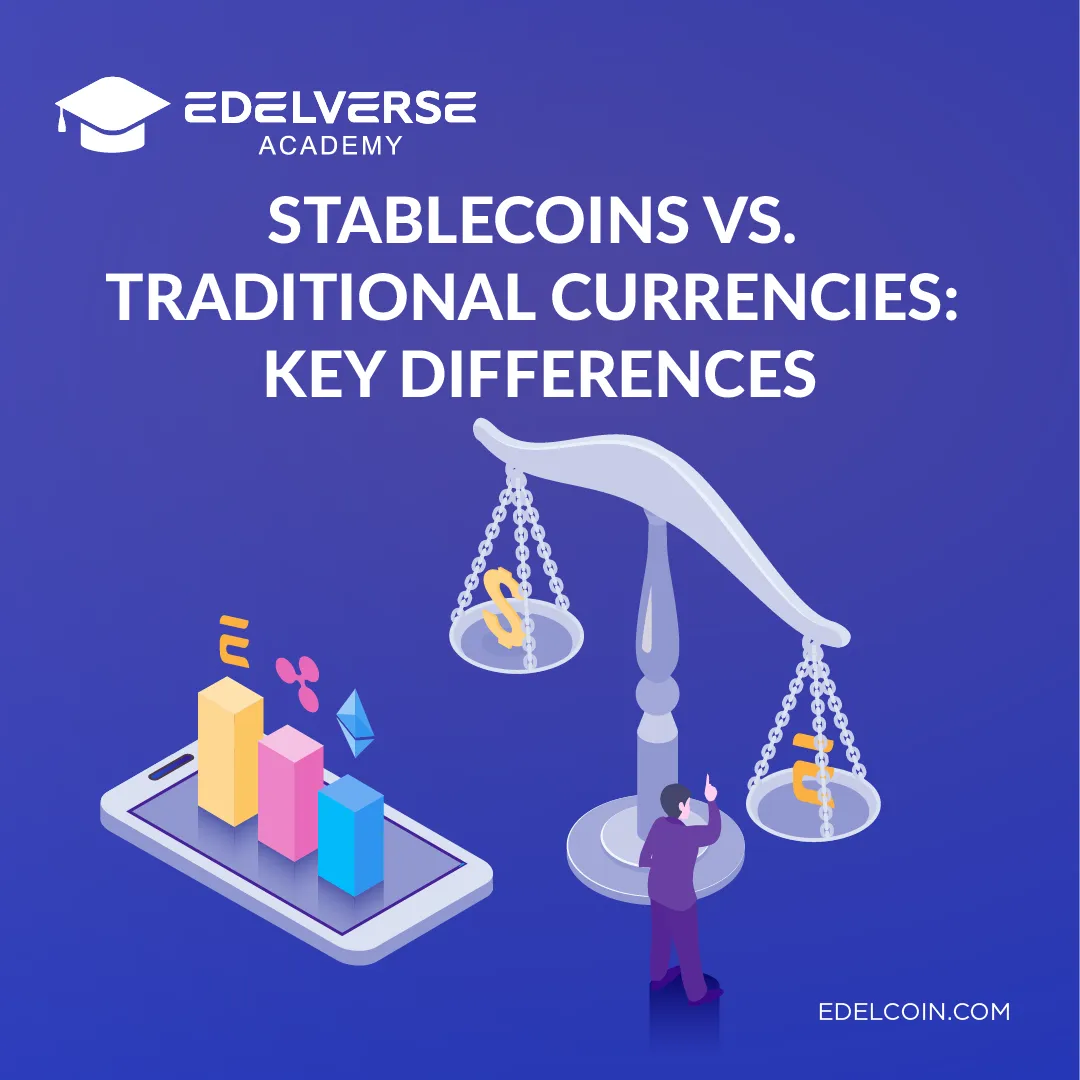
Stablecoins vs. Traditional currencies: Key differences
Introduction
Watch this article on YouTube
Let's start with the fact that stablecoins are a type of cryptocurrency, whose value is bound to a specific asset, which can be a fiat currency, a commodity on an exchange (for example, precious or industrial metals), or another cryptocurrency. In theory, providing a stablecoin with a reference asset in a ratio of 1:1 can make its value stable and not subject to radical changes that are often observed in the market of digital assets.
The main differences between stablecoins and traditional currencies
Value stability: Unlike traditional currencies, stablecoins strive to maintain the stability of their value by binding to a supporting asset. It can be a fiat currency, like the US dollar, or another asset, such as metals. Such an approach makes stablecoins attractive to investors seeking refuge from the volatility of the cryptocurrency market.
Decentralization: Unlike traditional currencies, which are controlled by central banks, stablecoins are usually decentralized and operate on the basis of blockchain technology. This ensures transparency and openness since all transactions can be verified by any member of the network.
Fast and cheap transactions: Transactions using stablecoins are usually processed faster and cheaper than traditional banking transactions, especially when transferring funds across borders.
Privacy: Although transactions with stablecoins are transparent and can be tracked on the blockchain, the identity of the participants in the transaction can remain anonymous, which provides a certain level of privacy.
Accessibility: Stablecoins may be available to people who otherwise would not be able to access traditional banking services, especially in developing countries.
Edelcoin: Ture innovation in the world of stablecoins
Edelcoin (EDLC) is an innovative product presented by the Edelcoin AG company from Switzerland, which is a pioneer in the tokenization industry. Edelcoin is a stable payment token backed by a portfolio of precious and base metals, which is a significant step forward in the world of digital currencies.
Edelcoin is not just another digital currency. In fact, it is a revolution in stable payment tokens. It offers greater stability than stablecoins based on a single fiat currency or metal, and the same versatility as other digital currencies. The token is based on a secure, scalable, and reliable blockchain technology, which provides users with confidence in conducting transactions.
With its user-centric approach, Edelcoin aims to set a new standard in the crypto industry by providing a platform that is secure, transparent, and easy to use.
Conclusion
Stablecoins offer a unique combination of stability, decentralization, fast and cheap transactions, privacy, and accessibility. However, like in any other field, there are specific issues and problems to be solved. The lack of regulation, transparency, and the ability to be used in illegal activities are the most important issues that need to be addressed. Despite this, stablecoins continue to play an important role in the evolution of digital currencies and financial technologies in general.

Test Your Knowledge
- What is a stablecoin?
a. This is a cryptocurrency, the value of which is bound to a certain asset.
b. This is a cryptocurrency, the value of which is constantly changing.
c. This is a cryptocurrency, the value of which is bound to the value of gold. - What is Edelcoin?
a. This is a payment token secured by a portfolio of precious and base metals.
b. This is a cryptocurrency, the value of which is bound to the value of gold.
c. This is a cryptocurrency, the value of which is constantly changing - What is the advantage of stablecoins over traditional currencies?
a. They provide greater price stability.
b. They provide greater volatility in value.
c. They provide greater transaction value.
Correct answers: 1 a, 2 a, 3 a.
Contents





